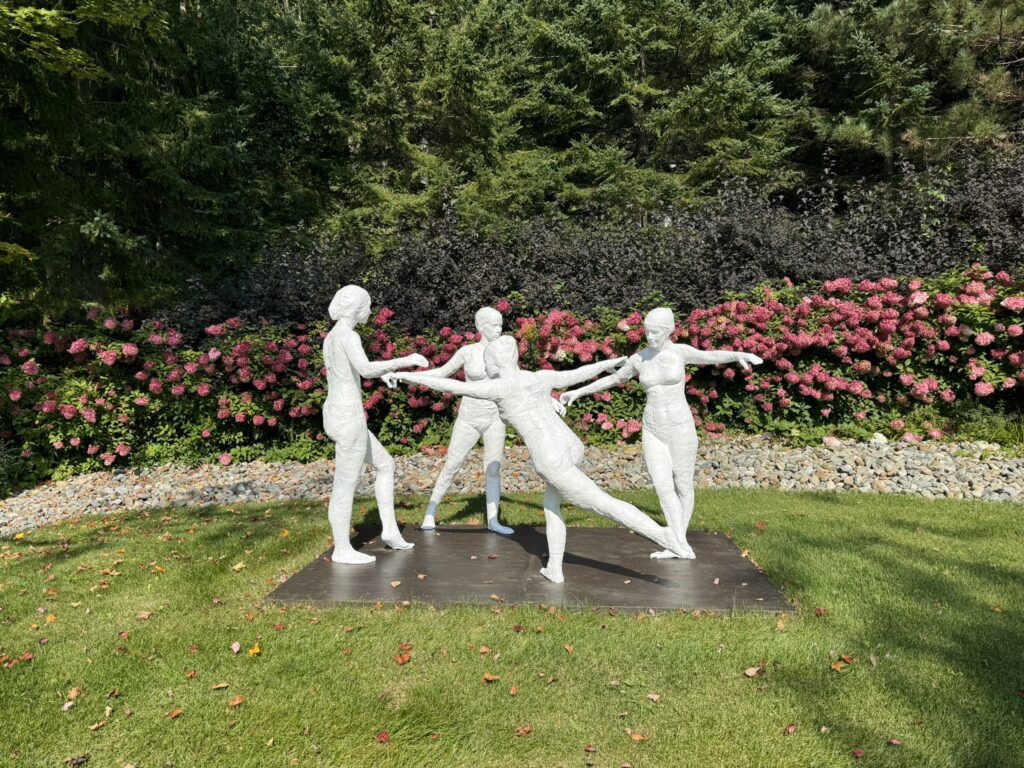Art binds people together, and for many families, collections are passed down through generations. One family’s art may be suitable to pass down person-to-person. Another family may choose to start a foundation featuring the pieces.
It’s the drive behind the collection that helps actualize the end goal: Is it simply to collect beautiful pieces or is the purpose larger than that?
Creating an artist or collector-endowed foundation is a noble endeavor that can have a lasting impact on the world long after the artist or collector has passed. Such foundations serve as bridges between artists and collectors, fostering creativity, preserving artistic legacies and contributing to the enrichment of society, according to O’Connor Davies, the accounting and advisory firm.
Families must first consider many structural and tax considerations, however. The first step is to define the purpose and structure of the foundation. Foundations in Canada must be established for charitable purposes, which fall in four categories under Canada Revenue Agency rules: relief of poverty, advancement of religion, advancement of education, and other purposes beneficial to the community. Art-related foundations are typically categorized as beneficial to the community or advancement of education.
Next is legal structure. A foundation can be a trust or a non-profit corporation. A trust is often preferred for family foundations, while a corporation is more common for public foundations, according to B.I.G. Charity Law Group.
Initially, setting up a foundation is quite expensive due to legal, administrative and advisory/tax services.
But this did not stop François Rochon, CEO of Giverny Capital and Giverny Foundation. From a young age, Rochon loved to paint. He loved the early Impressionists and thought he might become an artist. When he graduated with an engineering degree from Montreal’s École Polytechnique in 1990, the first thing Rochon did was fly to Giverny, France, to visit Claude Monet’s home and gardens.
“I thought it was the most beautiful place in the world,” says Rochon. “I had a dream to build something similar in Quebec—a beautiful garden with waterlilies and willow trees and flowers, with a museum filled with art.”

Rochon knew that to realize his dream, he would need money. After years of working as an engineer by day, a financial analyst by night and an artist on the weekend, Rochon left the engineering profession in 1996 and went into money management full-time. Two years later, he launched his own investment firm, which, naturally, he called Giverny Capital.
When his firm began generating revenue, Rochon decided to allocate 50 per cent of the profits to art acquisition. “I didn’t want to be rich in 25 years and then start buying art. I wanted art acquisition to be part of my daily life and to grow a collection parallel to the growth of the company.”
Rochon viewed Giverny Capital as a tool to help him build a Giverny-like setting in Quebec.
Today, the Giverny Capital Collection includes more than 800 works, including paintings, sculptures, videos, photographs, sound and light works, installations and concept art. To manage his growing collection, Rochon founded the Fondation Giverny pour l’art contemporain.
Last year, the foundation opened L’Observatoire, making his dream of creating an art gallery amid a rich garden setting a reality. Located in Shefford, Que., L’Observatoire is a three-storey residence overlooking lush vegetation with 5,000 square feet of exhibition space.
Rochon describes the venue as a space that balances contemplation with disruption. “We wanted to present artworks that are challenging, a little difficult, that make people think,” he says.

In Europe the idea of setting up a foundation and building a legacy through art is more common than it is in North America.
“la Caixa” Foundation, founded by Catalan lawyer Francesc Moragas Barret in Spain, has been around since 1904. Today it is one of the most notable in the world by volume of social investment. According to the foundation, within its structure, ”la Caixa” owns a financial holding, CriteriaCaixa, which manages its assets.
In Canada, one of the largest private foundations is the Audain Foundation. It was established in 1997 in British Columbia and has fostered the growth of Whistler’s Audain Art Museum, the Audain Art Museum Foundation, the Grizzly Bear Foundation and the Jean Paul Riopelle Foundation, which all operate independently under the Canada Not for Profit Corporations Act.

The Giverny Capital Collection is distinguished by its strong focus on artists from Quebec and across Canada. Among the nearly 200 artists featured in the collection is Vancouver-based photographer Jeff Wall, whom Rochon says is among the greatest living artists. “It’s pretty amazing how many Canadian artists, some of whom are well known worldwide, are not that well known in Canada,” he says. “I don’t think Canadians realize he’s probably in the top 20 artists in the world.”
Rochon has always selected works by artists, Canadian or not, that he hopes will stand the test of time. “I want to acquire the best works of our time,” he says, “and I hope they’ll be considered important in 50 years, 100 years from now.”
In other words, as with his investments, he’s playing the long game.
Rochon sees other parallels between his investment and art collection strategies. “Whether it’s shares of companies or paintings and sculptures, I want to buy items I think will be here in 10 years or more, that have something unique. In terms of companies, they do something better than their competitors. In terms of artists, they are doing something different and very original.”
There exists, according to Rochon, one key difference: “When you make an investment, at some point you want to sell the shares to realize a return. In terms of the art, I never want to sell.”
The appeal of art and how it impacts future generations certainly makes the case for considering a foundation.
The public can view the Giverny Collection at two spaces:
—3333 Crémazie Est in Montreal, by appointment.
—L’Observatoire in Shefford, Que., open from May to autumn, by appointment.
Disclaimer: This story was created by Canadian Family Offices’ commercial content division on behalf of PBY Capital, a member and content provider of this publication.
PBY Capital Limited is registered as an exempt market dealer, portfolio manager and investment fund manager with Canadian provincial securities regulatory authorities, servicing family offices and their professionals. For more information, visit: www.pbycapital.com. The opinions and information provided in this article are solely those of the writer and are not to be construed as personal, legal, accounting, taxation, or investment advice, or as an endorsement of any entity.

